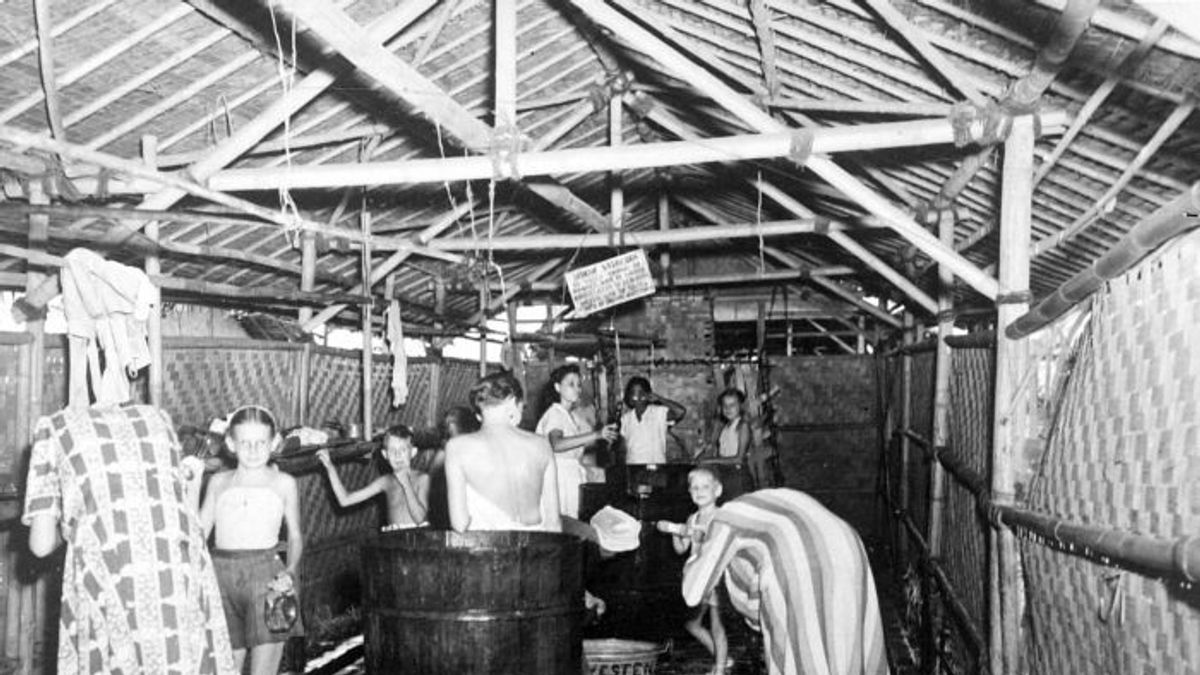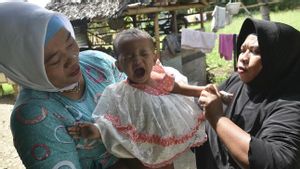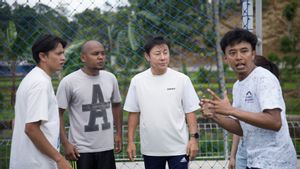JAKARTA - Japan's colonialism does not only carry wounds for the natives. Tuan, Dutch women and Indo-Netherlands (Sinyo-Noni) also felt it. They were forced by Japan to occupy the lowest position in the hierarchy of the people of the archipelago. In fact, previously they occupied the highest caste.
The Governor of the Land of the Rising Sun placed everything in an internancial camp (prison camp). Men and women are no exception. They were tortured and tarnished. Like people's garbage. Pregnant women especially.
Treating the Dutch colonialists to the natives cannot be tolerated. They often perpetuate racism. The bumiputras are often considered low. In fact, often equated with animals. The narrative lasts a long time. Even though the natives were blackmailed like dairy cows.
However, everything changed when Japan wanted to occupy the Dutch East Indies (Now: Indonesia). This wish has been planned for a long time by Japan. Japanese intelligence agents were also deployed throughout the country.
The placement was prepared to prepare a planned surprise attack on the Dutch East Indies in 1942. The results were satisfactory. Japan only needed a few months to paralyze the Dutch.
The natives who had hated the Dutch from the start fully supported Japan's steps. The owner of the homeland did not want to help the Dutch. The Bumiputras then echoed Japan as a savior.
Japan is happy is no joke. As a thank you, Japan placed all white people (Dutch Europeans-Indo) into the lowest 'kasta' in the archipelago. Alias as the most humiliated race. While the natives were praised as highly as possible. The bumiputras were asked not to be shy in Indonesian and dress up in the regions.
At the core of Japan's occupation, there are various racial projects that give birth to new racial hierarchy. In this new racial order, Asians are considered superior (at the peak of the hierarchy there are Japanese, then Indonesians, Chinese, Arabs, and Indians), while non-Asian nations, including Europeans and Eurasians who previously occupied special positions, now have to be at the lowest rank.
In determining and maintaining this hierarchy, Japan implemented various kinds of policies and projects. For example, establishing internancial camps to isolate Eroapa and Eurasian people, wakalu in practice more Eurasian than Europe which ended up in an international camp. The reason could be related to the fact that Japanese culture upholds speciality and racial purity, said L. Ayu Saraswati in the bookutih: Skin Color, rasa, and Beauty in Transnational Indonesia (2013).
Japan's colonialization in the archipelago is relatively short. However, the influence is extraordinary. Mainly for the Dutch. The international camp was deliberately founded by Japan to isolate all Europeans (Netherlands) and Indo-Netherlands.
Many are trying to save themselves. Indo-Netherlands' nature especially. Those who used to be proud to be born as Eurasian races, who tended to cover up the origins of their ancestors tried to pretend to show their Indonesian side.
However, Japan was not easily fooled. Their determination was strong. They wanted to embarrass and imprison all white nationalists in the Land of the Archipelago. Without exception. All men and women were led to enter the internziran camp.
In their international camp they are treated like animals. Men are forced to work and work with you. While all the women are 'luxury women, let alone' they are 'worked' to satisfy the Japanese army. Therefore, the international camp is filled with many pregnant women.
Prognancy status did not make Japan relax its power. They still have to stay in the internancial camp. If necessary, the child will be born - if not aborted - and become a resident of the interniran camp. The heinous treatment only ended when the Dutch took allies to the archipelago in 1945.
Here, women are gathered for the pleasure of these people. At the beginning, Japanese soldiers entered the big city of Indonesia, the Dutch people, especially the men were captured. Some of their women, wives or children of prisoners were collected in several places or large areas, in good houses.
One group of houses in one flashy area, is lined with a high wall as a unit. In some of these "villages" are among the women who live for the needs of Japanese army members. This is the fate of some female civilians and Dutch soldiers, said BM Diah as prepared by Dasman Djamaluddin in the book Catatan BM Diah: The Role of Pivotal Pemuda Seputarnya Proclamation 17-8-45(2018).
The English, Chinese, Japanese, Arabic, and French versions are automatically generated by the AI. So there may still be inaccuracies in translating, please always see Indonesian as our main language. (system supported by DigitalSiber.id)









